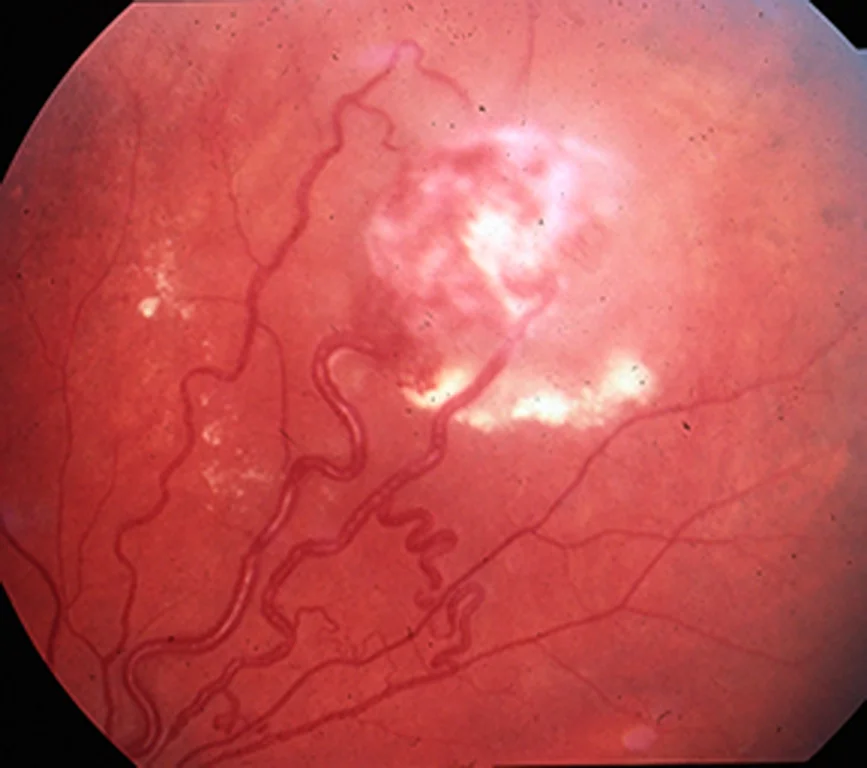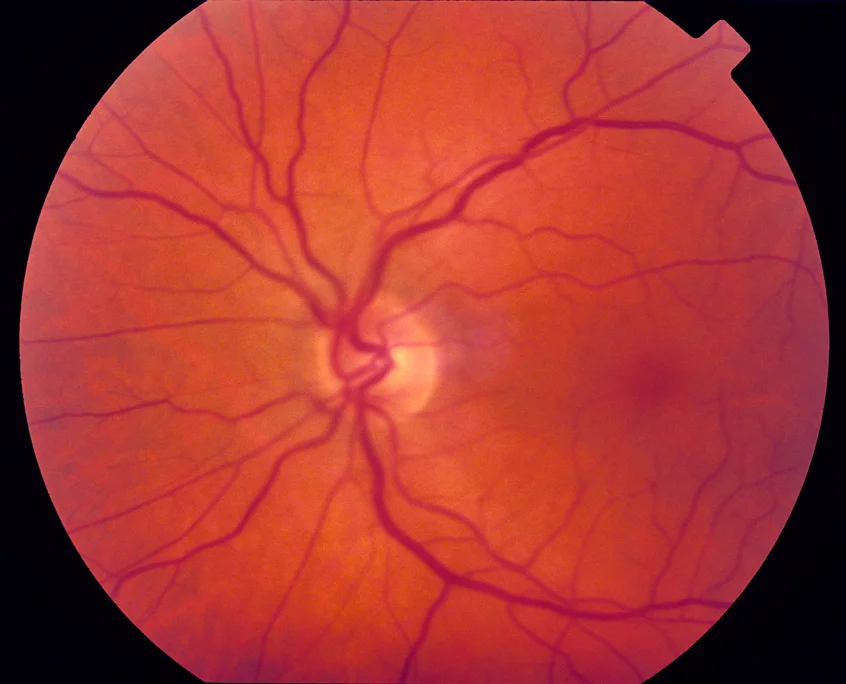Von Hippel-Lindau (VHL)
What is Von Hippel-Lindau (VHL)?
Von Hippel-Lindau (VHL) is a hereditary disease caused by a flaw in a tumor suppressor gene that regulates cell growth. VHL causes blood vessels to sprout up as tumors in the eye, the spinal cord, and the brain, especially in the cerebellum.
In 1904 a German ophthalmologist Eugen von Hippel first described angiomas, or blood vessel tumors, in the eye, and in 1924 Arvid Lindau described angiomas of the cerebellum and spine.
VHL occurs in approximately one in 36,000 births and it is listed as a rare disease. The average age of diagnosis is 26, however tumors may be present at birth and may begin growing well into old age.
Retinal Angioma
Normal Retina
How does it affect patients?
The longer VHL patients live, the more likely a tumor will appear. Patients with VHL live daily knowing at some point a headache or a funny heartbeat may be a tumor that threatens their functioning, their independence, their dreams and their very lives.
Many of these patients know first hand what will happen, as they often have fathers, mothers, brothers or sisters who go blind, have an open craniotomy or a surgery to remove an abdominal cancer. They have seen family pass away from VHL, often after multiple tumors and surgeries throughout their body.
How is Von Hippel-Lindau Treated?
The retinal specialists will laser or freeze the vascular tumors formed in the retina by the VHL.
If a tumor is found it is often lasered. Other times it is treated with injections of antivegf medicine to stop the tumor growth, a treatment that was developed in the last decade. These treatments can also be combined.
Sometimes the patient will develop a retinal detachment and a vitrectomy--a removal of the eye’s gel and scar tissue from the tumor-- is required. A bubble of oil or gas may be injected to help keep the retina attached. After this procedure the patient must keep their head pointed to the ground so that they heal properly.
Some VHL lesions in the retina are inoperable at presentation, or carry a poor prognosis into surgery. Even after surgery, when the retina is initially successfully attached, the retina can redetach post operatively.
With or without operation, the eye can shrink or become scarred. If this occurs, patients can visit an ocularist to fashion a prosthetic eye by using pictures and molds to match the other eye and eye socket.
What is the latest in treatment technology?
Photodynamic therapy (PDT) is a new type of laser treatment that allows us to directly treat some of the smaller and medium-sized tumors near the optic nerve. Injections of antivascular endothelial growth factor (antivegf) directly into the vitreous cavity (the jelly of the eye) may shrink vascular tumors in some cases. Some retinal surgeons combine the two, but these are still primitive weapons in treating VHL.
Scientists have discovered a tumor suppressor gene on chromosome 3 that appears to be the cause of VHL. This knowledge may one day lead to genetic treatment and a cure.
Until then patients, doctors, and families battle on.


